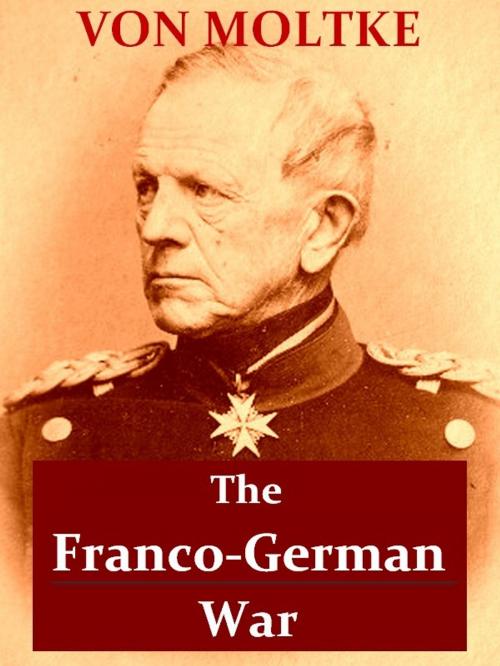| Author: | Helmuth von Moltke, Archibald Forbes, Translator | ISBN: | 1230000100035 |
| Publisher: | VolumesOfValue | Publication: | January 16, 2013 |
| Imprint: | Language: | English |
| Author: | Helmuth von Moltke, Archibald Forbes, Translator |
| ISBN: | 1230000100035 |
| Publisher: | VolumesOfValue |
| Publication: | January 16, 2013 |
| Imprint: | |
| Language: | English |
Linked footnotes
CONTENTS (abridged list)
PART I.
Combat of Weissenburg (4th August)
Battle of Wörth (6th August)
Battle of Spicheren (6th August)
Right-wheel of the German Army
Battle of Colombey-Nouilly (14th August)
Battle of Vionville—Mars la Tour (16th August)
Battle of Gravelotte—St. Privat (18th August)
New Distribution of the Army
The Army of Châlons
Battle of Beaumont (30th August)
Battle of Sedan (1st September)
PART II.
Sortie from Metz (26th August)
Battle of Noisseville (31st August)
Change of Government in Paris
Retreat of General Vinoy
March on Paris of IIIrd Army and the Army of the Meuse
Investment of Paris (19th September)
...
The Artillery Attack on Paris (January, 1871)
Battle of Mont Valérien (19th January)
Prosecution of the Artillery Attack on Paris to the Armistice
Operations of the Army of the South under General von Manteuffel
General Hann von Weyhern's March on Dijon
Occupation of the Departments of the Doubs, Jura, and Côte d'Or
Prosecution of the Siege of Belfort
The Armistice
The Homeward March of the German Army
APPENDIX.
On the pretended Council of War in the Wars of King William I.
"Orders of Battle" of the French and German Armies in the first period of the war
About the Author
"Helmuth Karl Bernhard Graf von Moltke (1800 – 1891) was a German Generalfeldmarschall. The chief of staff of the Prussian Army for thirty years, he is regarded as one of the great strategists of the latter 19th century, and the creator of a new, more modern method of directing armies in the field. He is often referred to as Moltke the Elder to distinguish him from his nephew Helmuth Johann Ludwig von Moltke, who commanded the German Army at the outbreak of World War I." --Wikipedia
Linked footnotes
CONTENTS (abridged list)
PART I.
Combat of Weissenburg (4th August)
Battle of Wörth (6th August)
Battle of Spicheren (6th August)
Right-wheel of the German Army
Battle of Colombey-Nouilly (14th August)
Battle of Vionville—Mars la Tour (16th August)
Battle of Gravelotte—St. Privat (18th August)
New Distribution of the Army
The Army of Châlons
Battle of Beaumont (30th August)
Battle of Sedan (1st September)
PART II.
Sortie from Metz (26th August)
Battle of Noisseville (31st August)
Change of Government in Paris
Retreat of General Vinoy
March on Paris of IIIrd Army and the Army of the Meuse
Investment of Paris (19th September)
...
The Artillery Attack on Paris (January, 1871)
Battle of Mont Valérien (19th January)
Prosecution of the Artillery Attack on Paris to the Armistice
Operations of the Army of the South under General von Manteuffel
General Hann von Weyhern's March on Dijon
Occupation of the Departments of the Doubs, Jura, and Côte d'Or
Prosecution of the Siege of Belfort
The Armistice
The Homeward March of the German Army
APPENDIX.
On the pretended Council of War in the Wars of King William I.
"Orders of Battle" of the French and German Armies in the first period of the war
About the Author
"Helmuth Karl Bernhard Graf von Moltke (1800 – 1891) was a German Generalfeldmarschall. The chief of staff of the Prussian Army for thirty years, he is regarded as one of the great strategists of the latter 19th century, and the creator of a new, more modern method of directing armies in the field. He is often referred to as Moltke the Elder to distinguish him from his nephew Helmuth Johann Ludwig von Moltke, who commanded the German Army at the outbreak of World War I." --Wikipedia















